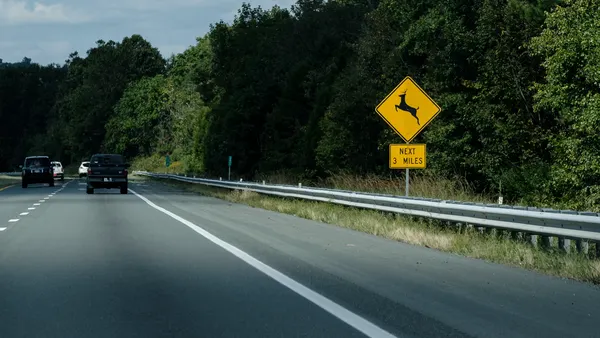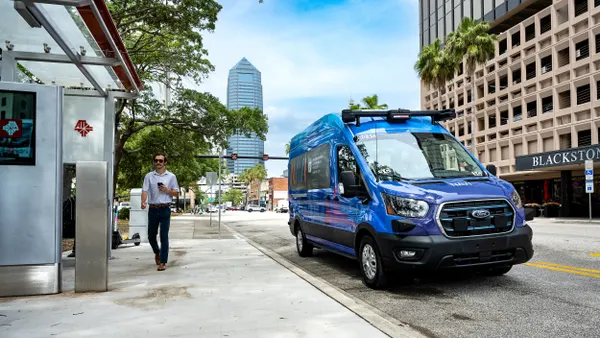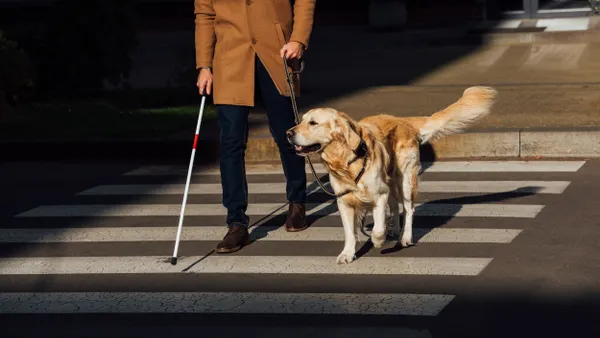Dive Brief:
- Researchers at the University of Utah released a study that uses rider data to determine the emissions saved by passengers taking transit instead of driving alone in cars.
- The researchers collected and analyzed data from the Utah Transit Authority's (UTA) system, on which customers tap a fare card to enter and exit. UTA found it offsets 1.5% of the region's on-road greenhouse gas (GHG) emissions, assuming all passengers would have driven alone on exactly the same route as the bus, light rail or commuter rail if they didn't take transit.
- Although UTA buses and trains frequently reduce emissions, that is not always the case. The study found transit lost its pollution benefit over personal vehicles on weekends, at night and in less densely populated areas due to operating with low ridership.
Dive Insight:
University of Utah researcher Daniel Mendoza points out that vehicles make up about half of GHG emissions in the area, so eliminating 1.5% of that is a significant number.
The study took into account public transit's emissions in addition to personal vehicles. Direct emissions occurred through traditional bus combustion engines, and indirect emissions occurred on electric trains that induce emissions at the power generation point. If the transit vehicles themselves were improved to reduce emissions, the pollution offset would probably be closer to 20% or 30%, Mendoza said.
The study did have two key limitations, which the researchers acknowledge in the final report. First, they assumed that each transit passenger would have otherwise completed their trip by driving alone in a car. That excludes many mobility options that transit passengers might have otherwise used including walking, biking, carpooling, ride-hailing or taking a scooter.
In addition, the study assumed that the route of each passenger on transit would have been identical if they had driven in a car. Train routes, in particular, tend not to mirror passenger vehicle routes. "But in order to do a study of this magnitude we needed to make some assumptions," Mendoza told Smart Cities Dive.
The researchers recognize that other studies have quantified the value of taking transit on pollution reduction. But this one is unique in its analysis of more detailed data gathered from the electronic fare collection (EFC) system. Transit agencies typically can offer an estimate of how long trips last but not exact places where passengers embark and disembark. Only a few U.S. train systems have fare touch points at entry and exit — such as in San Francisco and Washington, DC — but that concept largely is absent from buses.
The other technological advantage that provided greater data detail is the General Transit Feed Specification (GTFS). It allows transit agencies to post their data in a way that can be consumed by a variety of software applications. For example, GTFS supplies Google Maps with transit information so users can find their train or bus. The researchers were able to use GTFS to track the routes and frequency of UTA's trains and buses.
This research illustrates the types of analyses cities can perform with transit data, especially with newer tools. Rider-level analyses could provide greater insight about areas that could benefit from additional transit routes or greater frequency. It also shows the emissions reductions benefits of converting to new transit vehicles, especially those that operate on alternative fuels.
The research team intends to build on this study with two additional ones. They hope to release one study in November examining the impact that poor air quality has on transit ridership. Meaning, do riders take transit more or less frequently when they know it is an orange or red air quality day?
They hope to release a second study next spring examining how free transit rides during poor air quality days could influence rider behaviors and potentially reduce emissions. The researchers will study the phenomenon this winter when Utah is prone to inversions, weather patterns where warm air moves over cities positioned in valleys and traps cooler air and pollutants below for days at a time. This causes cities in Utah, including Salt Lake City, to experience some of the worst air pollution in the country.










